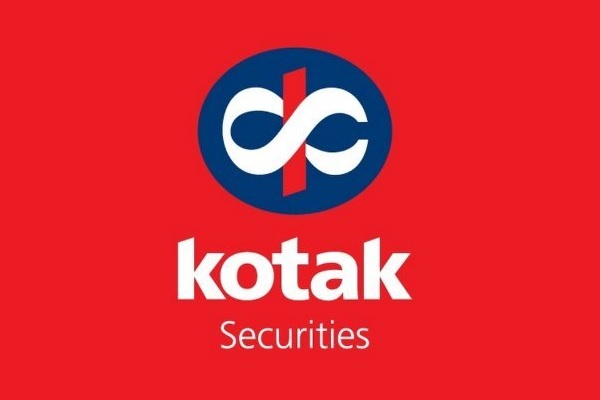Jeera trading range for the day is 24200-25160 - Kedia Advisory

Gold
Gold demonstrated resilience, settling up by 0.51% at 62567, driven by the aftermath of a U.S. inflation report that revealed a slightly cooler-than-expected reading. This follows recent warmer-than-expected U.S. inflation data, positioning the precious metal as a favored asset for investors amid indications of dovish monetary policy. The U.S. personal income and spending report aligns with the sentiments of monetary policy doves, advocating for potential interest rate cuts by the Federal Reserve. The CME FedWatch Tool indicates a market consensus of roughly 60% chance of a rate cut in June, underlining the expectation for a more accommodative monetary stance. Despite a slight downward revision in U.S. economic growth for the fourth quarter, the composition of the data suggests a robust near-term outlook. The impact of freezing temperatures on early activity is expected to be mitigated by the overall strength of the economic fundamentals. In the global context, China's notable surge in monthly net gold imports via Hong Kong, up by 51% in January, underscores the continued demand for gold as a safe-haven asset. This surge is attributed to preparations for the Lunar New Year festival, emphasizing gold's enduring appeal in times of uncertainty. Technically, the gold market is experiencing fresh buying momentum, with a 2.7% gain in open interest to settle at 13237 contracts. Prices have surged by 318 rupees. The support level is identified at 62230, with a potential test of 61890 on the downside. Resistance is anticipated at 62800, and a breakout could lead to further testing of 63030 levels.
Trading Ideas:
* Gold trading range for the day is 61890-63030.
* Gold rose as U.S. inflation report that came in just a bit cooler than expected.
* Federal Reserve doesn’t have to rush into a new easing cycle as American workers see wage growth.
* According to the CME FedWatch Tool, markets see a roughly 60% chance of a rate cut in June.
Silver
Silver recorded a gain of 0.72%, settling at 71279, supported by a weakened greenback as traders digested the latest macroeconomic data from the US. The core price gauge attached to the PCE, closely monitored by the Federal Reserve, showed a 0.4% rise in January, meeting market expectations. Despite concerns about the tight labor market, initial jobless claims slightly exceeded forecasts, alleviating some worries. The US economic growth in the fourth quarter, although slightly revised downward, revealed a stronger composition than initially thought, indicating a positive near-term outlook despite a slow start due to freezing temperatures. Federal Reserve Bank of New York President John Williams acknowledged a notable easing of inflation pressures but expressed caution, indicating that the central bank might not have completed necessary measures to achieve its 2% inflation target. Boston Fed Bank President Susan Collins added to the narrative, suggesting that the Federal Reserve might need to commence cutting its benchmark overnight lending rate later this year, signaling a potential shift in monetary policy. Technically, the market is undergoing short covering, marked by a drop in open interest by -5.74% to settle at 25476 contracts. Silver prices surged by 509 rupees. The support level is identified at 70690, with a potential test of 70095 on the downside. Resistance is expected at 71710, and a breakout could lead to further testing of 72135 levels.
Trading Ideas:
* Silver trading range for the day is 70095-72135.
* Silver gains as US PCE data solidified investors beliefs of Fed's accommodative stance.
* The US Core PCE Price Index rose by 0.4% over the previous month in January
* U.S. economic growth in the fourth quarter was lowered slightly
Crude oil
Crudeoil settled slightly lower by -0.11% at 6513, driven by speculation surrounding OPEC+ continuing supply cuts, which could gradually tighten the market. The Energy Information Administration's report indicated an increase in crude inventories for the fifth consecutive week, rising by 4.2 million barrels to 447.2 million barrels, surpassing expectations. Gasoline stocks fell for the fourth week, decreasing by 2.8 million barrels to 244.2 million barrels, nearly double the forecasted draw. Refinery utilization rates rose slightly, contributing to the dynamics of the oil market. All eyes are now on the upcoming OPEC+ meeting in March, where discussions about extending output cuts will take place. Producers are expected to maintain voluntary production limits until at least the June Ministerial Meeting to stabilize the market. The market is technically under fresh selling pressure, with a 1.91% increase in open interest to settle at 6246 contracts. Despite prices being down by -7 rupees, the support level is identified at 6467, with a potential test of 6420 on the downside. Resistance is likely at 6565, and a breakout could lead to further testing of 6616 levels. Additionally, geopolitical factors such as the uncertainty surrounding the ceasefire between Israel and Hamas and ongoing Houthi attacks on Red Sea shipping have added a risk premium to oil prices, contributing to the overall market sentiment.
Trading Ideas:
* Crudeoil trading range for the day is 6420-6616.
* Crude oil steadied driven by speculation that OPEC+ will continue supply cuts.
* Crude oil stockpiles rose while gasoline and distillate inventories fell last week.
* Gasoline stocks fell for a fourth consecutive week, decreasing by 2.8 million barrels to 244.2 million barrels.
Natural gas
Natural gas prices settled higher by 0.26%, closing at 157.1, driven by oversupply concerns resulting from a mild winter and record output levels. The ongoing shutdown of a liquefaction unit at Freeport LNG's export plant in Texas further contributes to the oversupply scenario, as more gas remains within the country. Producers like Chesapeake Energy have responded by cutting production by 30%, with other companies like Antero Resources, Comstock Resources, and EQT also reducing drilling and production activities. Despite efforts to curb production, gas output in the U.S. Lower 48 states increased to an average of 105 billion cubic feet per day (bcfd) in February, up from 102.1 bcfd in January. Traders grapple with a surplus of supply, elevated storage levels, and weak heating demand due to the mild winter. Technical issues at Freeport LNG's export facility have further limited gas flow to LNG export terminals. The EIA report on natural gas storage revealed that U.S. utilities withdrew 96 billion cubic feet from storage in the week ending February 23, exceeding market expectations of an 88 bcf draw. Technically, the market is experiencing fresh buying, indicated by a 0.88% increase in open interest to settle at 61,551 contracts. Prices rose by 0.4 rupees. Natural gas finds support at 153.4, with a potential test of 149.7 levels on the downside. Resistance is likely at 160.3, and a breakout could lead to further testing of 163.5 levels.
Trading Ideas:
* Naturalgas trading range for the day is 149.7-163.5.
* Natural gas prices fell due to an oversupply caused by a mild winter and record output levels.
* The ongoing shutdown of a liquefaction unit at Freeport LNG's export plant in Texas means more gas will stay in the country.
* Producers like Chesapeake Energy have cut production by 30% to address the surplus.
Copper
Copper closed slightly higher by 0.15% at 727.15, as market participants continued to evaluate the impact of stimulus measures and looser monetary policy in China on demand. Chile reported a 0.5% year-on-year growth in copper output for January, indicating steady production levels in one of the world's major copper-producing countries. However, concerns emerged as Chinese developer Country Garden faced a liquidation petition, undermining efforts to restore confidence in the property sector, a significant contributor to China's GDP. Moreover, copper inventories in SHFE warehouses more than doubled in just over two weeks, reaching their highest level since last March. This surge suggests that Chinese demand may not have fully recovered post the Lunar New Year holiday. Additionally, despite government measures, new home prices in China continued to decline in January, signaling persistent challenges in the real estate sector. On a global scale, the refined copper market showed a surplus of 20,000 metric tons in December, a notable shift from the deficit recorded in November. However, for the first 12 months of the year, the market still remained in a deficit of 87,000 metric tons compared to the same period a year earlier, according to the International Copper Study Group (ICSG). Technically, the copper market witnessed short-covering activity, with a drop in open interest by -1.75% to settle at 3919 contracts. Prices rose by 1.1 rupees, finding support at 725.7 and resistance likely at 729. A break above this level could lead to further testing of 730.8 levels.
Trading Ideas:
* Copper trading range for the day is 724.2-730.8.
* Copper gains as markets continued to assess the impact of China’s stimulus.
* Chile's copper output grew 0.5% year-on-year in January to 435,633 metric tons.
* The global refined copper market showed a 20,000 metric tons surplus in December
Zinc
Zinc prices rose by 0.49%, settling at 214.6, as the global zinc market deficit widened to 62,600 metric tons in December 2023, up from 53,500 tons in November, according to data from the International Lead and Zinc Study Group. For the full year 2023, the ILZSG reported a surplus of 204,000 tons, a notable shift from the deficit of 73,000 tons observed in 2022. Meanwhile, zinc inventories in Shanghai Futures Exchange-monitored warehouses surged by 163.80% since the last release on Feb 08. China's refined zinc output in January 2024 recorded a month-on-month decrease of 4.05%, standing at 567,000 mt, but a year-on-year increase of 10.9%. The decline in output is attributed to maintenance in various smelters across different regions and the shutdown of smelters in Yunnan and Guizhou for holidays. In January, domestic zinc alloy output increased by 6,600 mt from the previous month, reaching 109,600 mt. On the economic front, average daily new home sales in China saw a significant 34% year-on-year decline in January, leading to the most substantial price drop in 10 months. This decline underscores weak consumer strength and raises concerns about the effectiveness of Beijing's measures to stimulate property demand. From a technical perspective, zinc is undergoing short covering, evident in a 4.19% drop in open interest to settle at 4,591 contracts. Prices rose by 1.05 rupees. The support level is identified at 213.5, with a potential test of 212.4 on the downside. Resistance is expected at 215.6, and a breakout could lead to further testing of 216.6 levels.
Trading Ideas:
* Zinc trading range for the day is 212.4-216.6.
* Zinc gains as Global zinc market deficit increased to 62,600 metric tons in December 2023.
* China's refined zinc output in January 2024 was 567,000 mt, a month-on-month decrease of 23,900 mt.
* Average daily new home sales in China plummeted by 34% from a year earlier in January
Aluminium
Aluminium closed higher by 0.98% at 200.3, driven by short covering after a smelter in Inner Mongolia resumed production following a power outage. The extent of the production reduction is yet to be confirmed, contributing to market uncertainty. Downstream aluminium enterprises are gradually resuming production, with short-term operating rates recovering. Despite seasonal inventory growth of aluminium ingots, the total volume remains relatively low compared to recent years. Market sentiment is heavily influenced by ongoing assessments of stimulus measures and looser monetary policy in China, impacting the demand for base metals. Concerns loom over China's industrial demand amid a challenging backdrop, highlighted by four consecutive months of contractionary manufacturing PMI. Aluminium stocks in Shanghai Futures Exchange-monitored warehouses surged by 65.6% last week to the highest level since May, reaching 173,482 tons. Meanwhile, China's aluminium output in January recorded a 4.2% year-on-year increase at 3.562 million metric tons. The domestic daily average aluminium output remained flat month-on-month at 114,900 metric tons. Despite a slight decline in the operating rate of domestic aluminium primary processing enterprises in January, February 2024 sees most domestic aluminium companies maintaining steady operations. Technically, the aluminium market is witnessing short covering, with a drop in open interest by -8.4% to settle at 4800 contracts. Prices have risen by 1.95 rupees, finding support at 198.8. Resistance is likely at 201.4, and a breakout above could lead to further testing of 202.4 levels.
Trading Ideas:
* Aluminium trading range for the day is 197.2-202.4.
* Aluminium rises due to short covering after Inner Mongolia smelter restarts.
* Markets continued to assess the impact of stimulus and looser monetary policy in China on demand
* Aluminium downstream enterprises are steadily resuming production, with short-term operating rates recovering
Cotton Candy
Cotton prices for the Cottoncandy variety experienced a decline of -1.4%, settling at 61940, driven by the anticipation of tight supplies against relatively stable demand. The USDA's latest February WASDE report revealed a reduction in the projected 2023/24 world cotton production by 355,000 bales, with cuts in Australia and Benin offset by smaller increases elsewhere. World ending stocks for 2023/24 are nearly 700,000 bales lower than in January, attributed to reduced supplies from lower beginning stocks and production. India's cotton exports are set to reach their highest level in two years, with traders signing contracts to export 400,000 bales in February, primarily to China, Bangladesh, and Vietnam. The rally in global prices has made Indian cotton highly competitive, prompting an upward revision in the expected exports for the 2023/24 marketing year to 2 million bales, surpassing the earlier expectation of 1.4 million bales. India's cotton production for 2023/24 is anticipated to fall by 7.7% to 29.41 million bales, the lowest since 2007/08. The Cotton Association of India (CAI) has retained its cotton pressing estimate at 294.10 lakh bales, equivalent to 308.62 lakh running bales. The total cotton supply until the end of January 2024 is estimated at 210.05 lakh bales, with domestic consumption at 110.00 lakh bales and export shipments at 9.00 lakh bales. Technically, the market is witnessing long liquidation, evident in a -1.68% drop in open interest to settle at 469 contracts. Prices decreased by -880 rupees. Cottoncandy finds support at 61620, with a potential test of 61310 on the downside. Resistance is likely at 62420, and a breakout could lead to further testing of 62910 levels.
Trading Ideas:
* Cottoncandy trading range for the day is 61310-62910.
* Cotton gains amid prospect of tight supplies against a relatively stable demand
* The projected 2023/24 world cotton production is 355,000 bales lower this month.
* World 2023/24 cotton ending stocks are nearly 700,000 bales lower compared to January
* In Rajkot, a major spot market, the price ended at 29125.5 Rupees gained by 0.97 percent.
Turmeric
Turmeric prices surged by 2.94% to settle at 17162, bolstered by reduced supplies in the spot market. The market witnessed limited upside as buying activities slowed down in anticipation of stock releases ahead of the new crops. Delayed harvesting of the new crop and tighter ending stocks are anticipated to sustain positive market sentiments in the near term. Despite slower recent exports, an uptick is expected in the wake of upcoming festivals. However, pressure on prices persists due to improved crop conditions resulting from favorable weather. The expectation of a 20–25 percent decline in turmeric seeding reflects farmers' shifting priorities. Turmeric exports during Apr-Dec 2023 dropped by 2.27% at 121,171.01 tonnes compared to the same period in 2022. December 2023 witnessed a rise of 21.47% in exports compared to November 2023 but a decline of 13.41% compared to December 2022. Turmeric imports during Apr-Dec 2023 decreased by 25.43% at 10,655.73 tonnes compared to the same period in 2022. While December 2023 showed a drop of 2.60% compared to November 2023, it recorded a significant rise of 29.91% compared to December 2022. In the major spot market of Nizamabad, prices ended at 14829.8 Rupees, reflecting a gain of 1.42%. From a technical perspective, turmeric is witnessing fresh buying, evidenced by a 4.43% increase in open interest to settle at 14860 contracts. Prices surged by 490 rupees, finding support at 16498. Resistance is likely at 17582, and a breakout above could lead to further testing of 18000 levels.
Trading Ideas:
* Turmeric trading range for the day is 15832-18000.
* Turmeric gains supported by reduced supplies in the spot market.
* However, upside seen limited as buying activities has been slower in expectation of new crops.
* Export has been slow down in recent months and expected to increase in wake of series of festivals ahead.
* In Nizamabad, a major spot market, the price ended at 14829.8 Rupees gained by 1.42 percent.
Jeera
Jeera prices rose by 1.56%, settling at 24745, driven by low-level buying after a previous drop attributed to higher production prospects in key cultivating states like Gujarat and Rajasthan. The current rabi season has witnessed a four-year high in jeera acreage, with farmers significantly expanding cultivation in response to record prices from the previous marketing season. The strong correlation between market prices and acreage is evident, with Gujarat seeing a substantial 160% increase in jeera cultivation area to 5.60 lakh hectares, surpassing the normal acreage of 3.5 lakh hectares. Rajasthan also experienced a 25% increase, reaching 6.90 lakh hectares. Despite the potential for a bumper crop in India, global demand for Indian jeera has slumped as buyers prefer other destinations like Syria and Turkey due to the higher prices in India. Other major jeera-producing countries like China, Egypt, and Syria expect higher yields, contributing to the global market dynamics. Jeera exports during April-December 2023 dropped by 29.95% at 96,701.43 tonnes compared to the same period in 2022. However, there was a 51.05% rise in exports in December 2023 compared to November 2023. In Unjha, a major spot market, the price ended at 27576.75 Rupees, gaining 1.66%. Technically, the market is witnessing short-covering, evident in a -0.74% drop in open interest to settle at 1620 contracts. Prices increased by 380 rupees. Jeera finds support at 24480, with a potential test of 24200 on the downside. Resistance is likely at 24960, and a breakout could lead to further testing of 25160 levels.
Trading Ideas:
* Jeera trading range for the day is 24200-25160.
* Jeera gained on low level buying after prices dropped due to higher production prospects.
* Jeera acreage hits a four-year high in the current rabi season
* Stockists are showing interest in buying on recent downfall in prices triggering short covering.
* In Unjha, a major spot market, the price ended at 27576.75 Rupees gained by 1.66 percent.
Views express by all participants are for information & academic purpose only. Kindly read disclaimer before referring below views. Click Here For Disclaimer






















